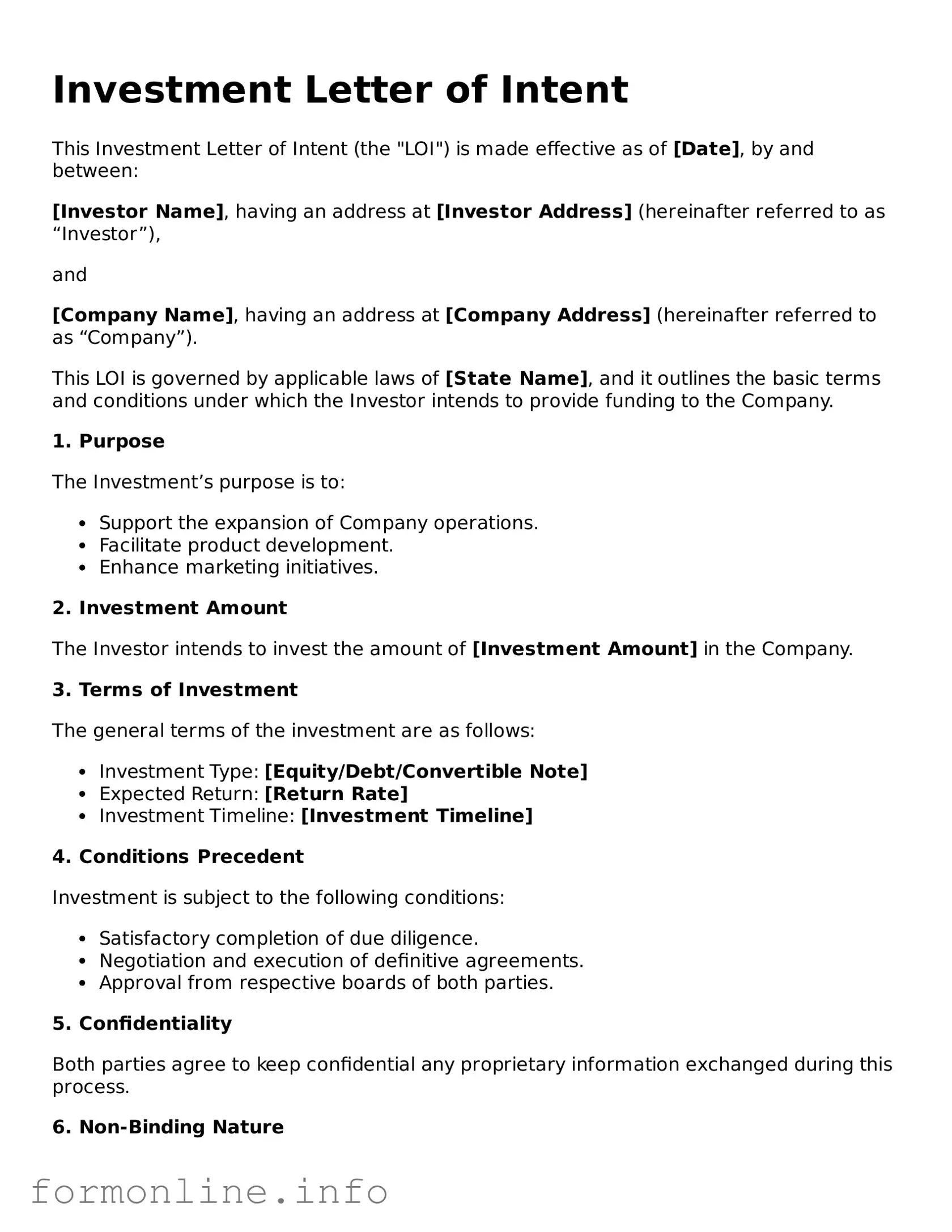Investment Letter of Intent
This Investment Letter of Intent (the "LOI") is made effective as of [Date], by and between:
[Investor Name], having an address at [Investor Address] (hereinafter referred to as “Investor”),
and
[Company Name], having an address at [Company Address] (hereinafter referred to as “Company”).
This LOI is governed by applicable laws of [State Name], and it outlines the basic terms and conditions under which the Investor intends to provide funding to the Company.
1. Purpose
The Investment’s purpose is to:
- Support the expansion of Company operations.
- Facilitate product development.
- Enhance marketing initiatives.
2. Investment Amount
The Investor intends to invest the amount of [Investment Amount] in the Company.
3. Terms of Investment
The general terms of the investment are as follows:
- Investment Type: [Equity/Debt/Convertible Note]
- Expected Return: [Return Rate]
- Investment Timeline: [Investment Timeline]
4. Conditions Precedent
Investment is subject to the following conditions:
- Satisfactory completion of due diligence.
- Negotiation and execution of definitive agreements.
- Approval from respective boards of both parties.
5. Confidentiality
Both parties agree to keep confidential any proprietary information exchanged during this process.
6. Non-Binding Nature
This LOI is non-binding and does not create any obligation on either party to proceed with the investment, except for the confidentiality provisions and any other specific provisions herein.
Agreed and Accepted:
[Investor Name]
Signature: ______________________ Date: _______________
[Company Name]
Signature: ______________________ Date: _______________
